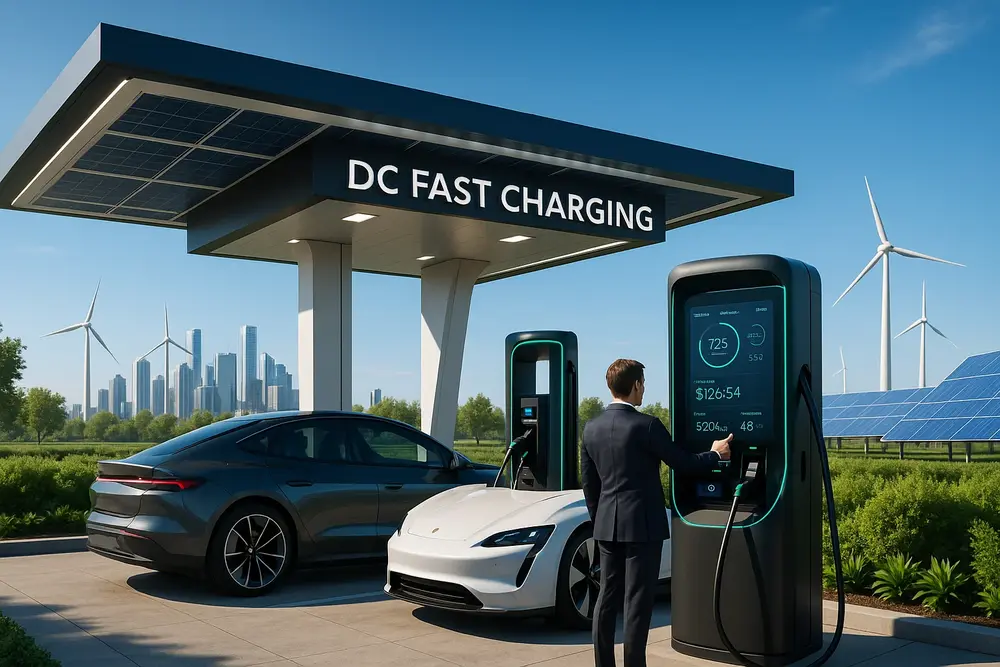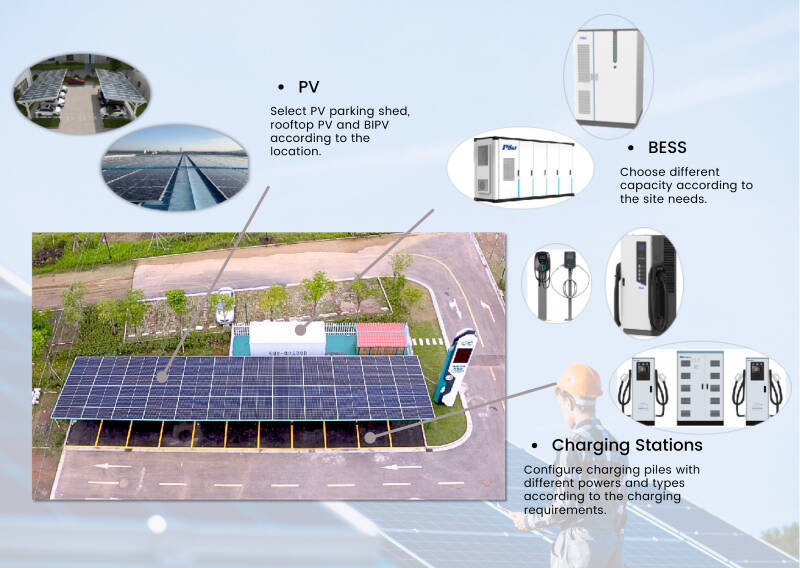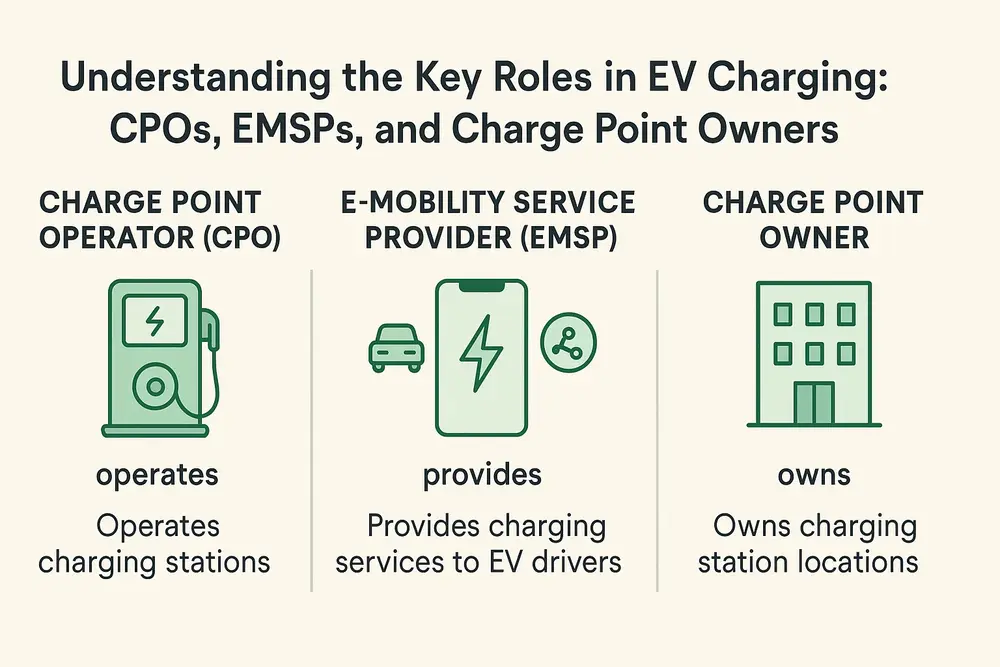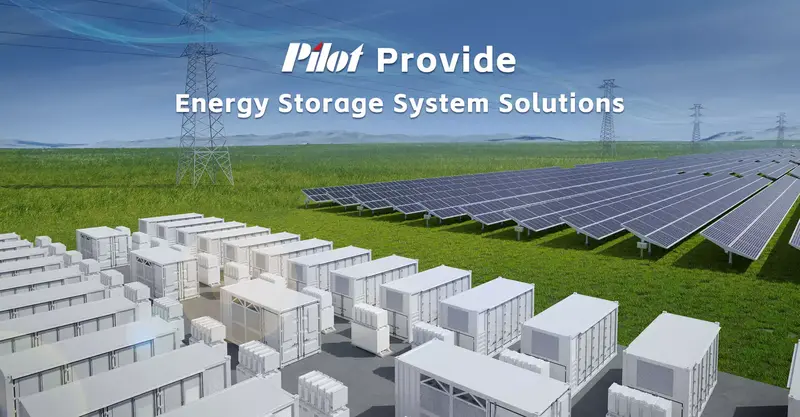
Products
Fast, Reliable, Everywhere

Solutions
Efficient, Innovative EV Charging Solutions.
News
We are committed to the innovation and application of EV charging.
The Rise of Fast Charging in a Rapidly Expanding EV Market
The electric vehicle (EV) industry has entered a transformative era. As per the IEA's Global EV Outlook, over 26 million electric cars were on the road by the end of 2022, and projections suggest this number will surge to approximately 240 million by 2030.
This accelerating EV adoption is fueling demand for efficient and powerful charging solutions. In 2022 alone, around 330,000 new fast charging stations were installed globally, bringing the total number to nearly 860,000. With the fast charging segment contributing more than 72% of global revenue, it’s clear that DC fast chargers are taking the lead—and the momentum is expected to continue through 2030.

Forward-looking businesses are capitalizing on this growth by deploying high-power direct current (DC) chargers capable of replenishing EV batteries in mere minutes. Below are eight essential considerations for making successful investments in DC charging infrastructure.
1. Understand Your EV Customer Base
Before choosing specific charging hardware, assess the profile of your location’s visitors and potential EV drivers. Consider:
Who are your primary customers?
What are their typical visit durations?
What charging expectations do they have?
Data shows that EV drivers tend to be younger, well-educated, male, and in full-time employment. Comparing these demographics with your existing customer base will help determine if DC charging is a good match.
For example, if your business sees long dwell times (like malls or cinemas), a mix of AC and DC chargers might be ideal. However, for quick-visit spots like gas stations or fast-food outlets, prioritizing DC fast chargers makes more sense. Match your charger’s power output to the average time customers spend at your location to optimize user experience and station ROI.
2. Build a Profitable Charging Strategy
Generating revenue from DC fast charging can take several forms. Consider diversifying your income streams to ensure a more stable return. Common approaches include:
Charging Fees: Charge users per kWh, per minute, or via subscription.
Business Partnerships: Collaborate with EV fleets or co-locate chargers at high-traffic destinations to share costs and boost visibility.
On-site Spending: Encourage customers to use on-site amenities while they wait, increasing their total spend.
Strategically combining these revenue channels can accelerate your path to profitability.
3. Evaluate Your Location’s Suitability
Every site has unique characteristics. Planning ahead will help minimize surprises. Key questions to consider:
Is there enough space for chargers and cables?
Will the parking layout need adjustments?
Can the grid connection handle the load?
Will you expand infrastructure in the future?
Also, be prepared to coordinate with local authorities, utility providers, and possibly landlords. Multi-location businesses should evaluate each site individually to identify installation limitations and opportunities.
4. Choose the Right DC Charging Hardware
DC chargers come in various configurations. You can choose between:
All-in-one units: Compact and easy to deploy.
Split systems: Separate power and user units, ideal for high-capacity setups.
Ensure your system is scalable, allowing for future expansion or power upgrades without extensive rewiring. Work with experienced vendors to choose hardware that aligns with your needs, traffic volume, and space.
5. Leverage Smart Charging Features
Smart charging technology ensures your EV infrastructure runs efficiently while minimizing costs. Key features include:
Load Balancing: Distributes electricity intelligently among stations or between your site and chargers to prevent overloads and reduce peak demand costs.
Simultaneous Charging: Lets multiple EVs use one station at once, optimizing space usage.
These capabilities not only improve operational efficiency but also future-proof your investment.
6. Use an Advanced Charging Management Platform
Managing a charging station isn’t just about the hardware. A robust charging management system (CMS) provides real-time insights, controls, and performance monitoring. Benefits include:
Dynamic pricing based on time of day or energy usage
Usage data analytics to optimize operations
Remote access for troubleshooting and updates
CMS platforms like EVBox Everon help keep operations streamlined and maximize ROI.
7. Prioritize Maintenance and Uptime
Even the best equipment needs routine maintenance. To avoid revenue loss due to downtime:
Schedule preventive maintenance with certified professionals
Choose suppliers who offer service contracts and care packages
Regular inspections help detect wear early and maintain system integrity
Think of it as preventive healthcare for your EV infrastructure.
8. Explore Investment Models to Suit Your Budget
While DC charging offers strong long-term returns, upfront costs can be high—ranging from $50,000 to $100,000 per unit before installation. There are multiple funding strategies to consider:
Direct Ownership: Full control, higher investment, higher potential return.
Leasing: Spread the cost over time via agreements with CPOs or EMSPs.
Charging-as-a-Service (CaaS): Subscription model covering installation, hardware, and maintenance.
Shared Investment: Co-invest with partners and share revenue or benefits.
Choose the model that best matches your capital, risk tolerance, and business goals.
Conclusion: Act Now to Capitalize on the EV Revolution
DC fast charging infrastructure is no longer just a trend—it’s a necessary asset for businesses looking to stay competitive in a rapidly electrifying world. Whether you're a retail chain, logistics provider, or property owner, investing in EV charging can unlock new revenue streams, enhance brand sustainability, and attract an expanding customer base.
With the right strategy, hardware, and partners in place, your business can confidently move into the fast lane of the clean energy future.




